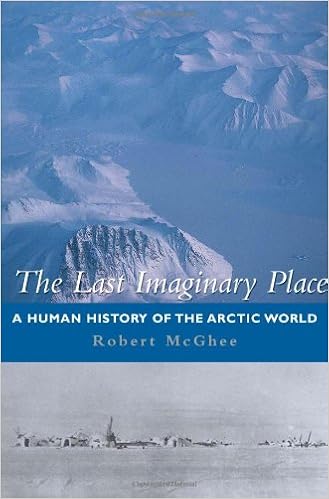
M. Kat Anderson provides a wealth of data on fatherland administration practices gleaned partly from interviews and correspondence with local americans who keep in mind what their grandparents informed them approximately how and whilst components have been burned, which vegetation have been eaten and that have been used for basketry, and the way crops have been tended. The complicated photograph that emerges from this and different historic resource fabric dispels the hunter-gatherer stereotype lengthy perpetuated in anthropological and old literature. We come to work out California's indigenous humans as lively brokers of environmental swap and stewardship. Tending the Wild persuasively argues that this conventional ecological wisdom is vital if we're to effectively meet the problem of dwelling sustainably.
Read Online or Download Tending the Wild: Native American Knowledge and the Management of California's Natural Resources PDF
Similar Anthropology books
The World Until Yesterday: What Can We Learn from Traditional Societies?
The bestselling writer of cave in and weapons, Germs and metal surveys the background of human societies to reply to the query: What do we study from conventional societies that could make the realm a greater position for we all? such a lot folks take with no consideration the gains of our sleek society, from air commute and telecommunications to literacy and weight problems.
War Before Civilization: The Myth of the Peaceful Savage
The parable of the peace-loving "noble savage" is chronic and pernicious. certainly, for the final fifty years, hottest and scholarly works have agreed that prehistoric battle used to be infrequent, innocuous, unimportant, and, like smallpox, a disorder of civilized societies by myself. Prehistoric conflict, based on this view, was once little greater than a ritualized video game, the place casualties have been constrained and the consequences of aggression really light.
The Origin and Evolution of Cultures (Evolution and Cognition)
Oxford provides, in a single handy and coherently equipped quantity, 20 influential yet before quite inaccessible articles that shape the spine of Boyd and Richerson's path-breaking paintings on evolution and tradition. Their interdisciplinary examine is predicated on notions. First, that tradition is important for figuring out human habit; not like different organisms, socially transmitted ideals, attitudes, and values seriously impact our habit.
The Last Imaginary Place: A Human History of the Arctic World
Sea ice and the nighttime sunlight, flaming aurora and never-ending iciness night--the arctic of traveler's stories and romantic novels is the unimaginable dream of an unlimited and desolate world--the final imaginary position on the earth. Now, during this attention-grabbing quantity, well known archeologist Robert McGhee lifts the veil to bare the genuine Arctic.
Extra resources for Tending the Wild: Native American Knowledge and the Management of California's Natural Resources
Indians within the Southwest, nice Basin, and California acted as effective selective forces on the various plant species they discovered precious. An instance is devil’s claw (Proboscidea parviflora). the 2 claw-shaped appendages at the podlike fruit offer fibers which are stripped to be used as black-colored splints within the closed coil basketry of numerous tribes. The paintings of the ethnobiologists Gary Nabhan and Amadeo Rea has proven that during the P. parviflora gene pool there's a actual domesticate—distinct from the wild genotype—that turns into powerful whilst cultivated, watered, and fertilized. Domesticated types have longer claws and undergo extra fruit, and their seeds have a white instead of black seed coat. Emergence of domesticated devil’s claw is a contemporary historic phenomenon that resulted from alterations within the plant’s availability within the wild and a rise within the marketability of baskets, which inspired a shift to dependence at the plant’s cultivation. nine changing THE DISTRIBUTION OF crops AND ANIMALS California Indians widened the ecological amplitude of local species by way of introducing them to new parts. a few vegetation have been really transplanted, others have been sown as seed in new destinations, and a few have been dispersed as seed to new parts by chance yet then cared for after sprouting. Dispersal via Indian organization could have taken position over fairly brief distances and should thereby have created the looks that the traditional distribution was once a bit extra huge than used to be really the case. the lack of plant and animal geographers and authors of floras and faunas to differentiate average and human-extended distributions has most likely ended in many incorrect assumptions in regards to the “natural levels” of vegetation and animals. 10 As early as 1914 the ethnobotanist Melvin Gilmore claimed that the flowers of a particular zone was once certainly motivated via Indian populations and that vegetation seen as local occasionally have been brought and disseminated via human service provider. one other ethnobotanist, Volney Jones, mentioned that the site and descriptions of archaeological websites can usually be ascertained by means of transformations within the nature, volume, or vigour of the vegetation becoming at the website, in comparison to these surrounding it. additionally, a few phytoarchaeological stories have published the alteration of plant distributions via prehistoric cultural practices. eleven there are lots of bills worldwide of vegetation tested in organization with ancient websites of human career. Agave parryi indicates an attractive organization with archaeological websites within the western component of the Apache-Sitgreaves nationwide woodland in Arizona. 3 species of culturally very important crops, Cleome serrulata, Lithospermum caroliniense, and Salvia subincisa, are principally restrained to Pueblo ruins in New Mexico. Nettles (Urtica dioica) are good tested in enriched soils round camps of the Salish in Puget Sound and in village websites northward all alongside the coast. 12 In California related observations were made.



